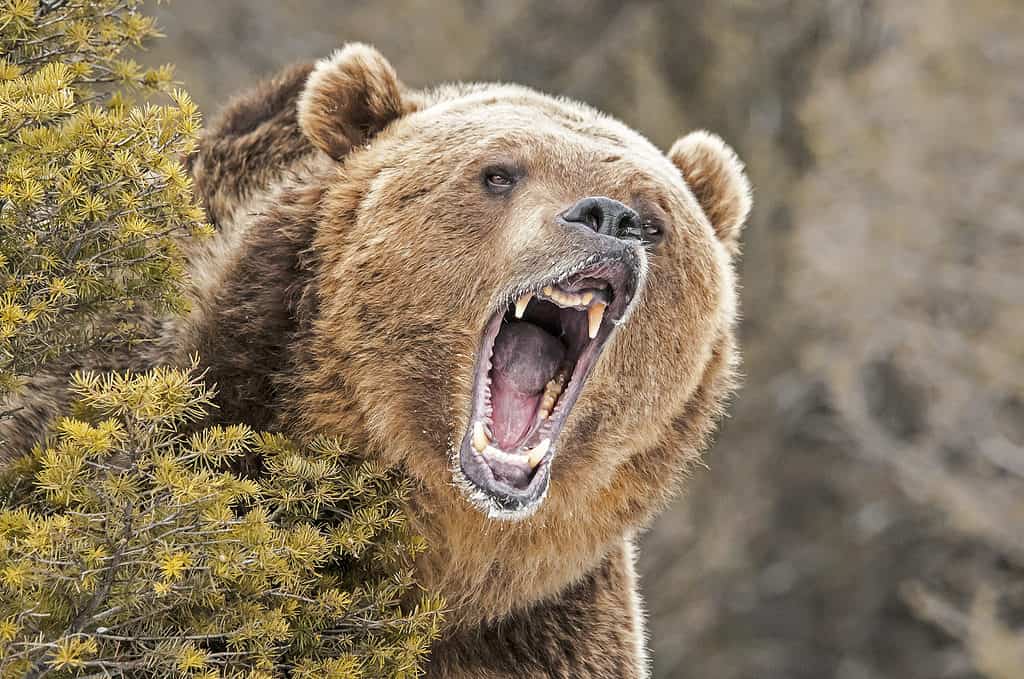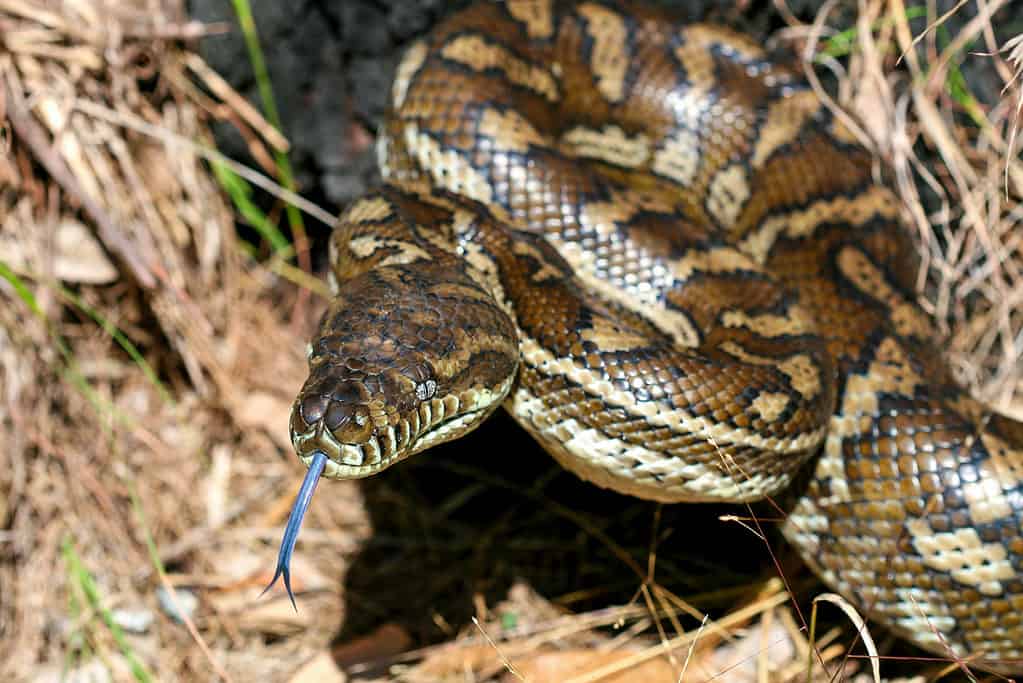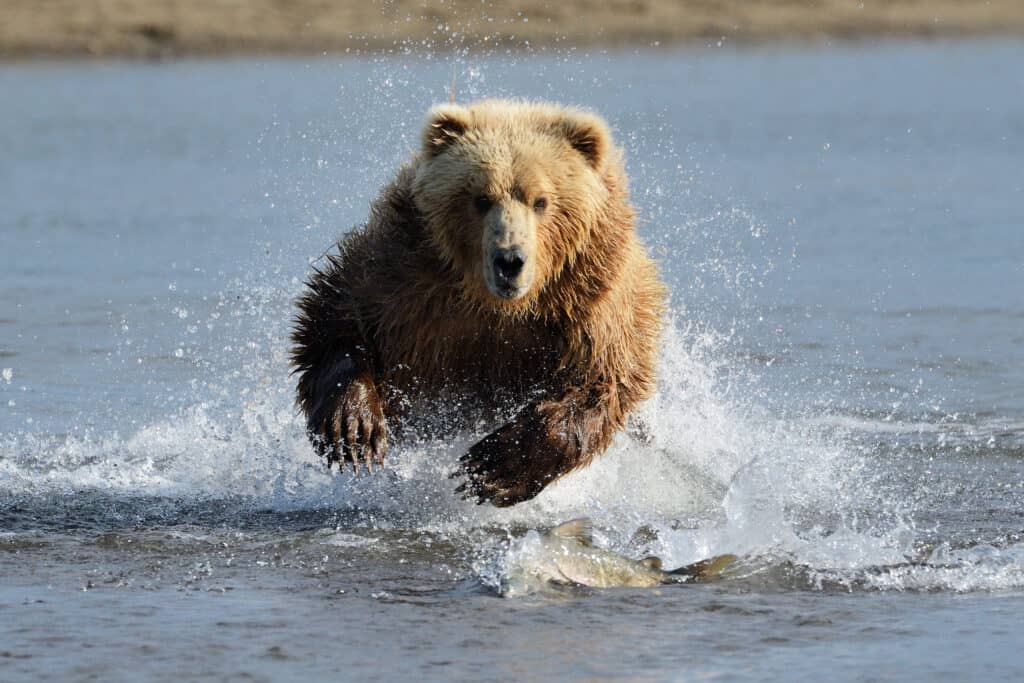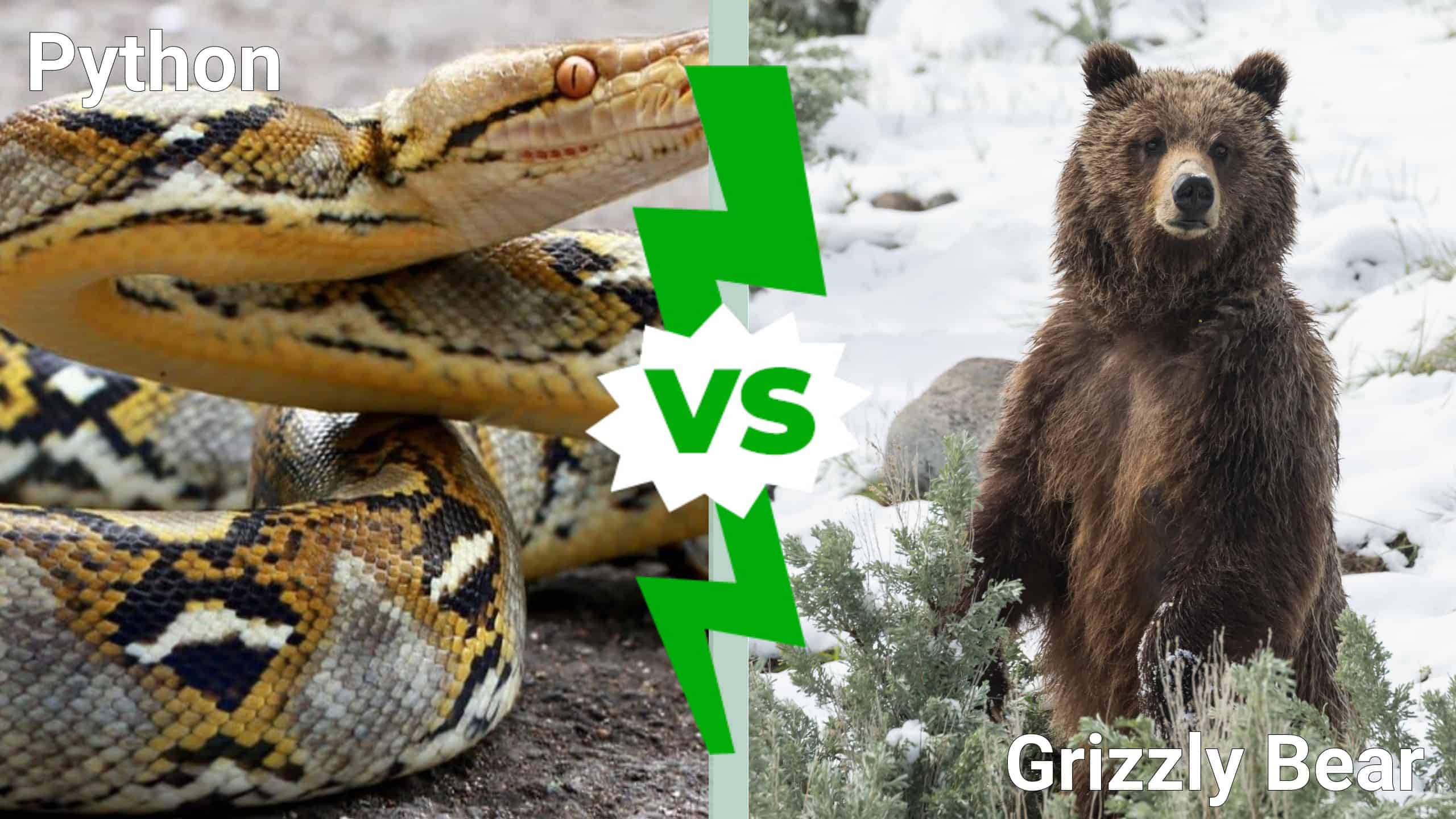One stretches out more than thirty feet, weighing hundreds of pounds while the other stands at only three to five feet at the shoulder. Both have the power to crush and kill — but in different ways. In a battle between a python vs. a grizzly bear, which animal emerges victorious? Let’s find out!
Comparing a Python and a Grizzly Bear
| Python | Grizzly Bear | |
|---|---|---|
| Size | 23 inches to 33 feet long Seven ounces to 250 pounds | Three to five feet tall (at the shoulder) Up to nine feet tall when standing 455 – 860 pounds |
| Speed and Movement Type | One mile per hour | Up to 35 miles per hour |
| Defenses | Coiling into a ball, escaping, and striking | Bluff charging, woofing, snapping jaws, clawing, biting |
| Offensive Capabilities | Squeezing, crushing, and constricting | 1,000 PSI bite force, sheer strength, biting, clawing |
| Predatory Behavior | They ambush their prey | Charging, biting neck or back, clawing |
What Are the Key Differences Between a Python and a Grizzly Bear?
There are several key differences between a python and a grizzly bear. For one, a python is a reptile without any legs. To move about, it slithers on the ground or swims in the water. Grizzly bears are huge mammals that have four legs and can stand on their two hind feet. Not only are they different species, but they are also different sizes, they move differently, and they have different defenses. When they attack, they do it in completely different ways as well.

Reticulated pythons are the largest pythons, capable of growing up to 33 feet long.
©I Wayan Sumatika/Shutterstock.com
What Are the Key Factors in a Fight Between a Python and a Grizzly Bear?
The key factors in a fight between a python and a grizzly bear are their offensive capabilities. A python uses its entire body to squeeze, crush, and constrict, and it doesn’t have any venom. Although it might bite, it’s not injecting a powerful toxin that could help incapacitate an opponent. On the other hand, a grizzly bear has an insanely strong bite force and massive strength. It can use its weight, its claws, and its teeth to fight.
Python vs. Grizzly Bear: Size
Pythons vary wildly in size but to consider a fight between a python and a grizzly bear, let’s consider the largest type of python which may reach 33 feet long and up to 250 pounds. Although that big of a python would intimidate animals in the wild, a grizzly bear stands three to five feet tall and can reach up to nine feet when it’s standing on its two hind legs. It can also weigh up to 860 pounds, which is more than three times the weight of the largest python known to man.

Grizzly bears have a crushing bite force of 1,000 PSI.
©Scott E Read/Shutterstock.com
Python vs. Grizzly Bear: Speed and Movement Type
Pythons slither on the ground and move slowly, only reaching up to one mile per hour. They depend on their bodies to crush and kill their prey and don’t rely on their speed to chase after their prey. Grizzly bears can move up to 35 miles per hour. They can chase down their prey, which includes large animals like elk, and they can stand on their two hind legs or run on all fours.
Python vs. Grizzly Bear: Defenses
Pythons and grizzly bears react differently when defending themselves. A python might coil into a ball and tuck its head if it’s feeling threatened. It may also strike if the threat gets too close. Grizzly bears may bluff charge if they’re in full defense mode, attempting to ward off the threat. They may also snap their jaws and use vocalizations in attempts to intimidate. If the threat gets too close, a grizzly resorts to clawing and biting

. A python uses its entire body to squeeze, crush, and constrict its prey.
©Michelle Marks/Shutterstock.com
Python vs. Grizzly Bear: Offensive Capabilities
When a python captures prey, it squeezes and crushes it. This is a constrictor that can use its entire body to keep pressing down on an animal to render it lifeless. Its squeezing force is about 14 PSI, which is strong enough to kill a human being. A grizzly, on the other hand, has a bite force of 1,000 PSI, meaning it could crunch right through a bowling ball. Grizzlies use their claws, their impressively strong bite force, and their sheer strength to take down any opponents.
Python vs. Grizzly Bear: Predatory Behavior
Since pythons don’t move quickly, they lie in wait until they can ambush their prey. Grizzlies can employ their running skills and charge pray. Typically, they bite on the neck or back and claw the animal to take it down.

Grizzly bears can move up to 35 miles per hour.
©AndreAnita/Shutterstock.com
Python vs. Grizzly Bear: Who Would Win in a Fight?
In a fight between a python and a grizzly bear, a grizzly bear would undoubtedly win. Although a python is intimidatingly large and has a powerful squeezing force, it is no match for the ultra-powerful grizzly bear that has more tools in its arsenal to use during a fight. Even if a python managed to wrap itself around the grizzly’s body, a grizzly would maniacally claw at it, shredding it to pieces and taking its life before it would be able to constrict anymore.
Discover the "Monster" Snake 5X Bigger than an Anaconda
Every day A-Z Animals sends out some of the most incredible facts in the world from our free newsletter. Want to discover the 10 most beautiful snakes in the world, a "snake island" where you're never more than 3 feet from danger, or a "monster" snake 5X larger than an anaconda? Then sign up right now and you'll start receiving our daily newsletter absolutely free.
Thank you for reading! Have some feedback for us? Contact the AZ Animals editorial team.








